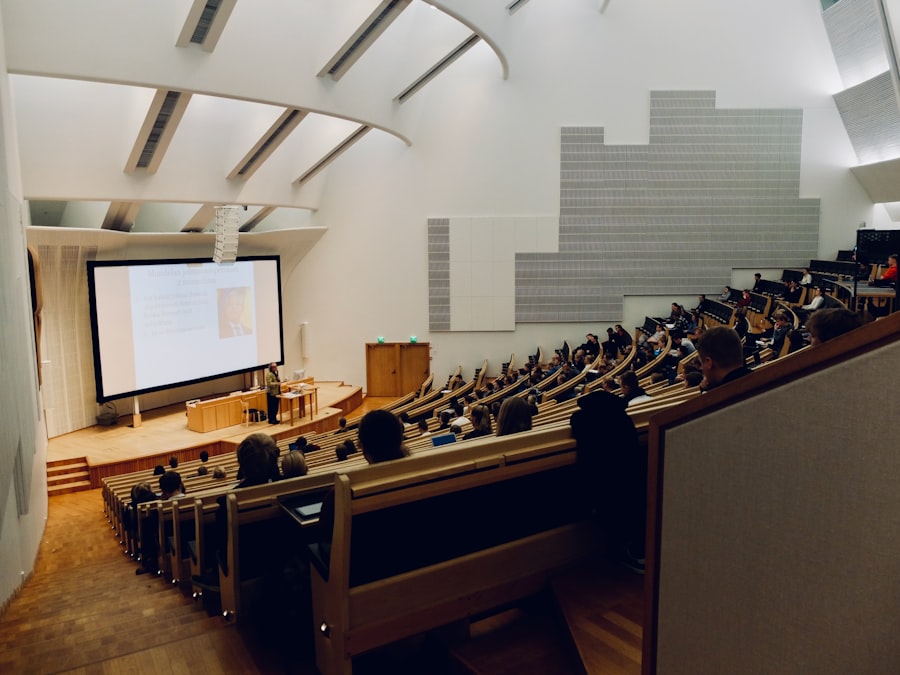
Language acquisition is a complex and multifaceted process that enables individuals to understand and produce language. It encompasses the ways in which humans learn to communicate, whether through spoken, written, or signed forms. This process begins in infancy and continues throughout life, influenced by a myriad of factors including cognitive development, social interaction, and environmental context.
The study of language acquisition not only sheds light on how individuals learn their first language but also how they can acquire additional languages later in life. Understanding this phenomenon is crucial for educators, linguists, psychologists, and parents alike, as it informs teaching methodologies and parenting strategies that can foster effective communication skills. The intricacies of language acquisition can be observed through various theoretical frameworks.
For instance, Noam Chomsky’s theory of Universal Grammar posits that humans are born with an innate ability to acquire language, suggesting that the capacity for language is hardwired into the brain. In contrast, behaviorist theories emphasize the role of environmental stimuli and reinforcement in learning language. These differing perspectives highlight the ongoing debate about the nature versus nurture aspects of language development.
As researchers continue to explore these theories, they uncover the profound implications of language acquisition on cognitive development, social interaction, and cultural identity.
Key Takeaways
- Language acquisition is the process of learning a language, and it is a complex and fascinating aspect of human development.
- The brain plays a crucial role in language learning, with different areas of the brain being responsible for different aspects of language processing.
- The critical period hypothesis suggests that there is a specific window of time during which language acquisition is most effective, and that age can affect language learning abilities.
- Environment and culture have a significant impact on language development, as individuals learn language through exposure and interaction with their surroundings.
- Social interaction is essential for language learning, as it provides opportunities for practice, feedback, and reinforcement of language skills.
The Role of the Brain in Language Learning
The brain plays a pivotal role in language learning, with specific areas dedicated to processing linguistic information. The left hemisphere is predominantly responsible for language functions, particularly in right-handed individuals. Key regions such as Broca’s area and Wernicke’s area are crucial for speech production and comprehension, respectively.
Broca’s area, located in the frontal lobe, is associated with the formation of words and sentences, while Wernicke’s area, found in the temporal lobe, is involved in understanding spoken and written language. Damage to these areas can result in aphasia, a condition that impairs communication abilities, underscoring the brain’s integral role in language processing. Neuroplasticity, the brain’s ability to reorganize itself by forming new neural connections throughout life, further illustrates how language learning occurs.
This adaptability allows individuals to acquire new languages or refine their existing linguistic skills. For example, studies have shown that bilingual individuals often exhibit enhanced cognitive flexibility and problem-solving skills due to the increased neural pathways associated with managing multiple languages. Additionally, research utilizing neuroimaging techniques has revealed that engaging in language learning activates various brain regions beyond those traditionally associated with language, indicating that the process is not only about memorizing vocabulary or grammar rules but also involves complex cognitive functions.
The Critical Period Hypothesis: How Age Affects Language Acquisition

The Critical Period Hypothesis (CPH) posits that there is an optimal window for language acquisition that is most pronounced during early childhood. According to this theory, children are particularly adept at learning languages before puberty due to heightened neuroplasticity and cognitive flexibility. During this period, they can effortlessly absorb linguistic structures and sounds, often achieving native-like proficiency.
This phenomenon can be observed in children who are exposed to multiple languages from a young age; they tend to develop a more nuanced understanding of phonetics and grammar compared to those who begin learning later in life. Research supporting the CPH includes studies of feral children and cases of late language exposure. For instance, the case of Genie, a girl who was isolated from human contact until she was 13 years old, illustrates the challenges faced when language exposure occurs after the critical period.
Despite intensive training, Genie struggled to acquire grammatical structures and often communicated using simple phrases. Such cases highlight the importance of early exposure to language for achieving fluency and complexity in communication. However, it is essential to note that while age can influence language acquisition, it does not render it impossible for older learners; rather, it may require different strategies and approaches.
The Influence of Environment and Culture on Language Development
| Factors | Impact on Language Development |
|---|---|
| Environment | Exposure to different languages, dialects, and communication styles can influence language acquisition and proficiency. |
| Culture | Cultural norms, values, and traditions can shape the vocabulary, grammar, and usage of language within a community. |
| Socioeconomic Status | Access to resources, education, and opportunities can impact language development and proficiency. |
| Family Dynamics | Parental involvement, communication patterns, and language use within the family can influence a child’s language development. |
The environment in which a child grows up significantly impacts their language development. Factors such as socioeconomic status, parental involvement, and access to educational resources play crucial roles in shaping linguistic abilities. Children from linguistically rich environments—where caregivers engage in frequent conversations, read aloud regularly, and provide diverse vocabulary—tend to develop stronger language skills than those from less stimulating backgrounds.
This disparity underscores the importance of nurturing environments that promote verbal interaction and literacy from an early age. Cultural context also shapes language development by influencing the way language is used and understood. Different cultures have unique communication styles, idioms, and expressions that reflect their values and social norms.
For example, some cultures prioritize indirect communication and non-verbal cues over direct speech, which can affect how children learn to interpret meaning beyond words. Additionally, bilingual or multilingual environments expose children to varying linguistic structures and cultural nuances, enriching their overall language experience. This cultural interplay not only enhances linguistic competence but also fosters a deeper understanding of diverse perspectives.
The Importance of Social Interaction in Language Learning
Social interaction is a fundamental component of effective language learning. Through conversations with peers and adults, individuals practice their linguistic skills in real-world contexts, allowing them to refine their pronunciation, vocabulary, and grammatical structures.
This perspective highlights the importance of engaging with others as a means of acquiring language. In educational settings, collaborative learning activities such as group discussions or peer teaching can significantly enhance language acquisition. For instance, when students work together on projects or engage in role-playing exercises, they are not only practicing their language skills but also developing critical thinking and problem-solving abilities.
Furthermore, social interaction provides opportunities for feedback and correction, which are essential for mastering complex linguistic features. The dynamic nature of communication fosters an environment where learners feel comfortable experimenting with language and making mistakes—an integral part of the learning process.
The Role of Motivation and Attention in Language Acquisition

Engaging Learning Experiences
Moreover, creating engaging and relevant learning experiences can capture learners’ attention more effectively than traditional rote memorization methods. By incorporating interactive activities that align with learners’ interests and goals, educators can foster an environment conducive to sustained attention and motivation.
The Impact of Bilingualism and Multilingualism on Language Development
Bilingualism and multilingualism have profound effects on cognitive development and linguistic proficiency. Research indicates that bilingual individuals often exhibit enhanced executive functions—such as problem-solving skills, cognitive flexibility, and working memory—compared to their monolingual peers. This cognitive advantage arises from the mental juggling required to switch between languages and manage different linguistic systems simultaneously.
Furthermore, bilingualism can lead to greater metalinguistic awareness; learners become more attuned to the structure and function of language itself. However, bilingualism also presents unique challenges. For instance, individuals may experience interference between languages when switching contexts or may struggle with maintaining proficiency in both languages if one is not used regularly.
Additionally, societal attitudes towards bilingualism can influence an individual’s experience; in some contexts, bilingualism is celebrated as an asset while in others it may be viewed as a hindrance. Understanding these dynamics is crucial for educators and policymakers aiming to support bilingual learners effectively.
Strategies for Enhancing Language Acquisition in Children and Adults
To enhance language acquisition across different age groups, various strategies can be employed that cater to individual learning styles and contexts. For children, creating a rich linguistic environment is paramount; this can be achieved through reading aloud daily, engaging in conversations that encourage open-ended responses, and providing opportunities for play-based learning where language use is natural and spontaneous. Incorporating songs, rhymes, and storytelling can also make learning enjoyable while reinforcing vocabulary and grammatical structures.
For adults seeking to acquire new languages, immersion experiences can be particularly effective. Engaging with native speakers through conversation exchanges or travel can provide authentic contexts for practicing language skills. Additionally, utilizing technology—such as language learning apps or online courses—can offer flexible options for learners to practice at their own pace while accessing diverse resources.
Setting specific goals and tracking progress can also enhance motivation and accountability throughout the learning journey. In conclusion, understanding the multifaceted nature of language acquisition reveals its complexity as influenced by biological factors like brain function and critical periods; environmental aspects such as culture; social dynamics; motivation; bilingualism; and effective strategies for learning across different age groups. Each element plays a vital role in shaping how individuals acquire languages throughout their lives.
One interesting article related to language acquisition is Dealing with Insomnia. This article discusses the challenges of sleep disorders and how they can impact cognitive functions, including language learning. Lack of sleep can hinder the brain’s ability to process and retain new information, making it harder for individuals to acquire a new language. It highlights the importance of getting enough rest for optimal language acquisition.
FAQs
What is language acquisition?
Language acquisition refers to the process through which humans acquire the capacity to perceive, produce, and use words to understand and communicate with others.
What are the stages of language acquisition?
Language acquisition typically involves several stages, including babbling, one-word stage, two-word stage, telegraphic speech, and eventually, the development of more complex grammatical structures and vocabulary.
What are the main theories of language acquisition?
The main theories of language acquisition include behaviorist theories, nativist theories, interactionist theories, and cognitive theories. These theories offer different perspectives on how language is acquired and developed.
What are the factors that influence language acquisition?
Factors that influence language acquisition include environmental factors, such as exposure to language, social interaction, and cultural influences, as well as individual factors, such as cognitive development and neurological processes.
What are the differences between first language acquisition and second language acquisition?
First language acquisition refers to the process of acquiring one’s native language during early childhood, while second language acquisition refers to the process of acquiring a new language after the first language has already been established. The processes and factors involved in each type of acquisition can differ.



